We’ve delved deep into the FBI archives on the Zodiac Killer to bring you an intriguing and informative look at one of America’s most notorious and enigmatic unsolved cases. The Zodiac Killer terrorized Northern California during the late 1960s and early 1970s, leaving a trail of victims and a series of cryptic messages that remain unsolved to this day. The FBI’s involvement in the case sheds light on the extensive effort to track down a murderer who seemed to always be one step ahead of the authorities.
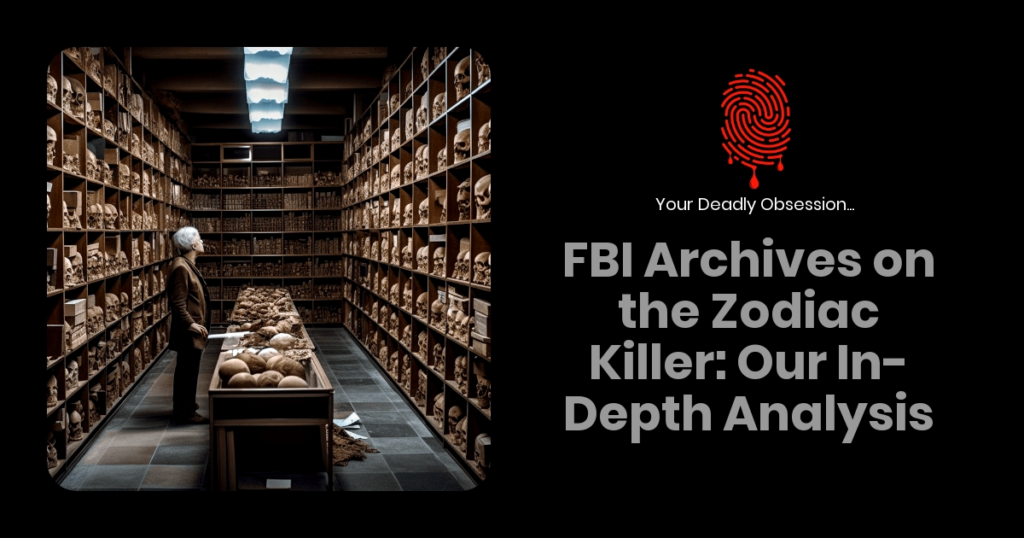
Despite the passage of time and advances in technology, the Zodiac Killer’s identity and motivation continue to elude investigators, making this case one of the FBI’s most enduring and mystifying. We’ll examine some of the noteworthy details found in the FBI’s records, including the infamous ciphers, letters, and descriptions of the Zodiac’s attacks. These archived documents provide a fascinating insight into the mind of a killer and the tireless work of the agents on his trail.
Through our analysis of the FBI archives, we hope to paint a clearer picture of this chilling chapter in American criminal history. By exploring the evidence, investigative methods, and theories surrounding the Zodiac Killer, we’ll try to piece together the puzzle that has captivated the public’s imagination for over half a century. Join us as we embark on a journey into the chilling world of an uncaught and enigmatic murderer.
Unraveling the Zodiac Killer’s Cipher
We’ve delved into the FBI archives on the Zodiac Killer and discovered fascinating information on the infamous unsolved ciphers. The Zodiac Killer terrorized Northern California in the late 1960s and early 1970s, and to this day, his true identity remains a mystery. We’ll explore the complex ciphers he used to taunt law enforcement and try to understand the methods behind his madness.
Throughout his reign of terror, the Zodiac Killer sent a series of letters to newspapers containing cryptograms. So far, four distinct ciphers have been sent, but only one has been definitively solved. Here’s a summary of the ciphers:
| Cipher Name | Decrypt Status |
|---|---|
| Z408 | Solved |
| Z340 | Unsolved |
| Z13 | Unsolved |
| Z32 | Unsolved |
The first cipher, dubbed Z408, was sent in three consecutive parts to three different newspapers in 1969. This cipher was solved by a teacher and his wife, Donald and Bettye Harden, with the following steps:
- Frequency analysis: Identifying the most common symbols and their possible corresponding letters.
- Plausible phrases: Spotting possible phrases (e.g., “KILL”) and building upon them.
- Bipartite substitution: Deciphering the message based on substitutions from the identified phrases.
After lengthy analysis, the Hardens solved Z408 in less than a week. However, the message only revealed the killer’s twisted reasons for his crimes and did not disclose any useful information about his identity.
Following the success of the Hardens, many tried to crack the remaining three ciphers. The second cipher, Z340, had puzzled amateur and professional codebreakers for decades. In December 2020, a team of cryptographers finally claimed to have solved it, but there is ongoing debate about the accuracy of their solution.
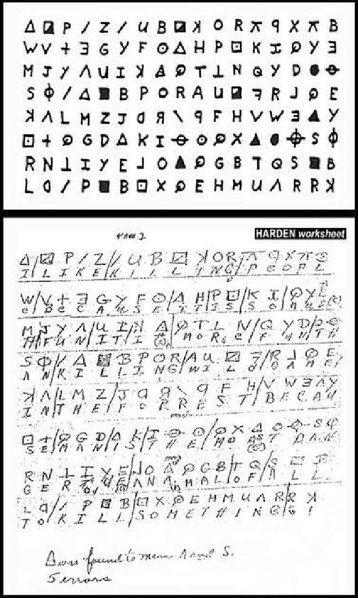
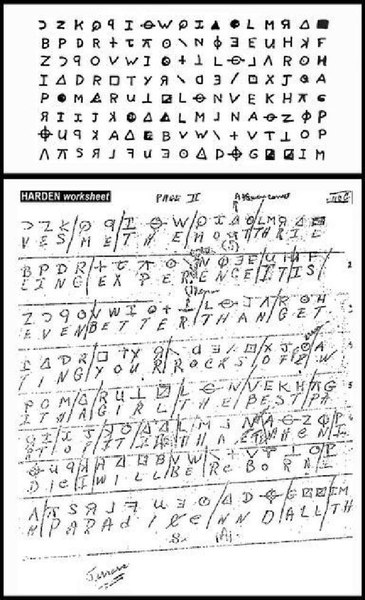
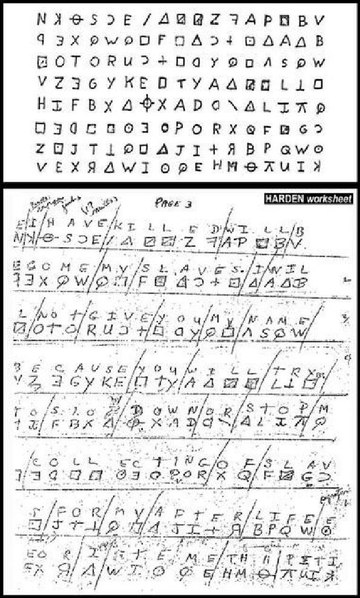


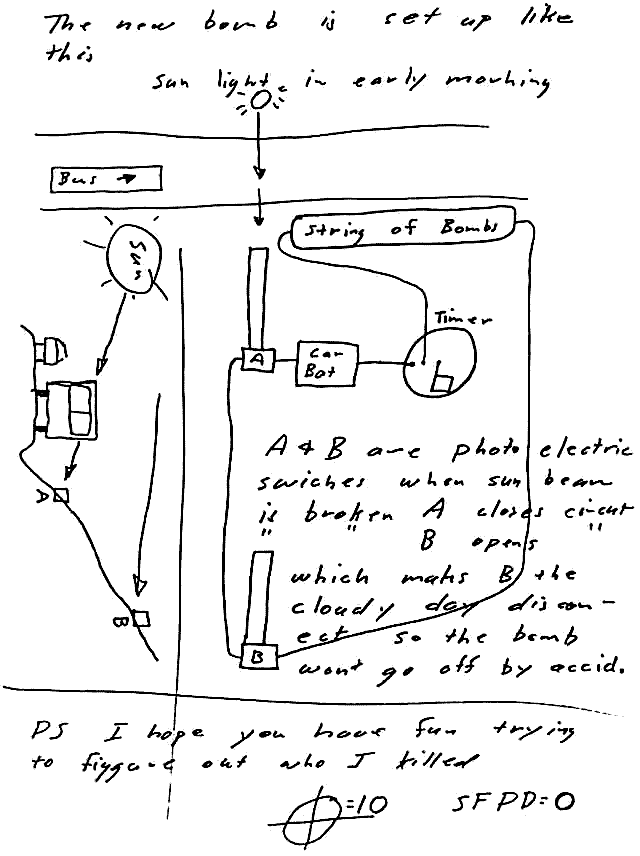
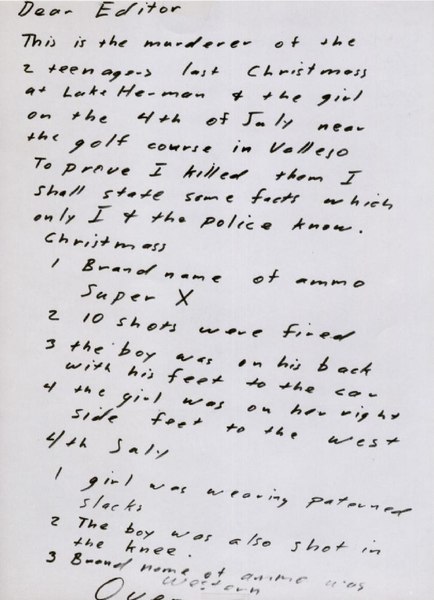
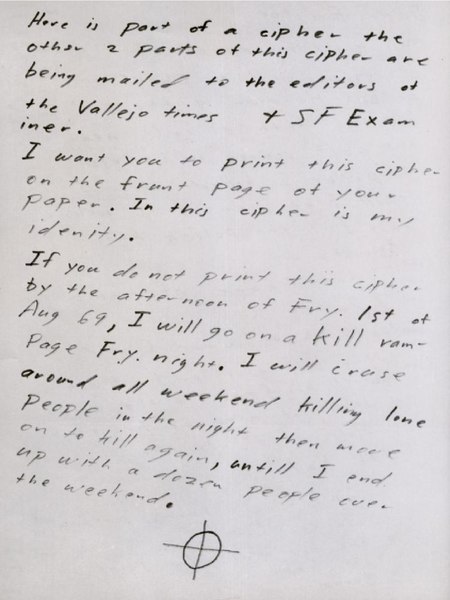
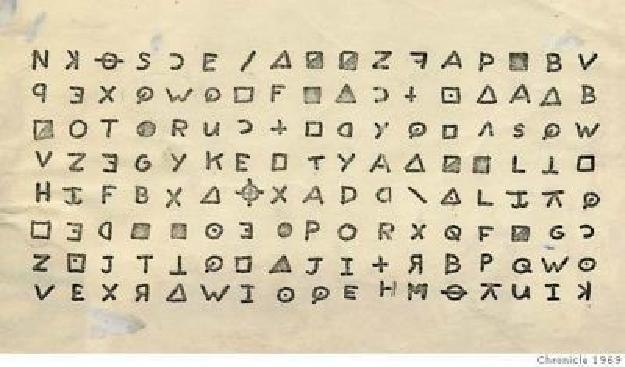
The two remaining ciphers, Z13 and Z32, are still unsolved, stimulating many enthusiasts to continue attempting to crack these cryptic codes. Various theories abound, such as:
- The use of homophonic substitution, where each symbol has multiple corresponding letters.
- Imposing a specific structure or grid onto the ciphers, revealing hidden patterns.
- Applying additional codebreaking techniques, like anagrams or polyalphabetic substitution.
While these unsolved ciphers tantalize the minds of cold case fanatics and mystery lovers, the hunt for the Zodiac Killer’s true identity and the definitive decoding of his messages persist. We hope one day to bring closure to this enigmatic and haunting case.
The FBI’s Role in the Zodiac Investigation
We’ll take a closer look at the FBI’s involvement in the Zodiac Killer investigation, which remains one of the most enigmatic unsolved cases in American history. The FBI became involved in the case in 1969, primarily due to the threatening letters sent to various newspaper outlets that contained ciphers and demanded the letters’ publication.
While the bulk of the investigation was handled by local law enforcement agencies – specifically, the San Francisco Police Department and the Vallejo Police Department – the FBI became an invaluable resource in decoding the mysterious ciphers sent by the killer.
Here are a few key points highlighting the FBI’s support during the investigation:
- Providing cryptanalysis expertise to decode the cryptic messages sent to newspapers by the assailant
- Offering behavioral analysis to assist in building a profile of the potential suspect
- Delivering forensic assistance in examining evidence such as handwriting, fingerprints, and DNA
Despite the collaborative effort and extensive file on the case, the Zodiac Killer has not been conclusively identified. Here are a few notable statistics about the FBI’s work on the Zodiac investigation:
| Total case files | Active years in FBI records | Most recent FBI involvement |
|---|---|---|
| 2,000+ | 1969-2004 | 2021 |
Throughout the years, the FBI has had several major achievements that influenced the trajectory of the case, such as:
- In 1969, the FBI’s Cryptographic Section successfully decoded a 408-symbol cipher sent by the Zodiac to the local newspapers, which led to further investigation and gave insight into the killer’s frame of mind.
- In 2018, the FBI’s work on Golden State Killer’s case revived hope in the potential of using new forensic methods like genetic genealogy to possibly identify the Zodiac Killer.
While the FBI’s role in the Zodiac investigation might not have led to a direct arrest, the Bureau has provided valuable support over the years to the local law enforcement agencies. New technological advancements and the continued popularity of cold cases give us reason to remain hopeful that one day, the Zodiac Killer case will finally be solved.
The Letters, Clues, and Taunts
One of the most intriguing aspects of the infamous Zodiac Killer is the series of letters and cryptograms that they sent to newspapers. These letters are crucial pieces of evidence in the FBI archives on the Zodiac Killer case. We’ll take a closer look at some of these chilling messages that taunted law enforcement and the public alike.
The first Zodiac letter arrived on August 1, 1969, at the offices of three different California newspapers. All three letters contained a cipher that was supposedly the key to the killer’s identity. The Zodiac claimed they would begin a killing spree if the ciphers weren’t published on the front page of the newspapers. The first cipher was decrypted relatively quickly by a couple from California, revealing a chilling message about the killer’s intentions, but not their identity.
Over their reign of terror, the Zodiac sent a total of 21 letters and four ciphers. The ciphers are:
- 408-symbol cipher (solved)
- 340-symbol cipher (solved in 2020)
- 13-symbol cipher (unsolved)
- 32-symbol cipher (unsolved)
The Zodiac’s letters often contained details about their murders and taunted the police for their inability to capture them. They also included more cryptic messages and symbols, which only added to the mystery surrounding their identity. At that time, the Zodiac Killer boasted about a tally of victims and claimed responsibility for various unsolved murders.
Several clues have emerged from these letters, with some deciphered messages pointing out the killer’s motivation. One of the key confessions found was “I like killing people because it is so much fun.” Through the years, experts have scrutinized these letters and ciphers in an attempt to break the codes and uncover valuable insights into the Zodiac Killer’s methods and thought process.
In addition to the letters, the Zodiac Killer left behind more physical evidence at the crime scenes. They would often use a distinct trademark – a circle with a cross running through it – to sign their work. This symbol appeared not only in the letters, but also as a hand-drawn sign on a car door at one of the crime scenes, for example.
To this day, the mystery and debate around the Zodiac Killer’s identity remain unsolved. The FBI archives continue to be a valuable resource for enthusiasts and investigators alike, as they search for new clues and analyze the chilling communications left behind by one of America’s most enigmatic serial killers.
Notable Suspects through FBI Archives
Throughout the years, FBI archives have revealed various notable suspects in the Zodiac Killer case. We’ll discuss some of these individuals, along with the evidence that put them on law enforcement’s radar.
- Arthur Leigh Allen: Perhaps the most well-known suspect, Allen was investigated in the early 70s. Police found his handwriting and fingerprints to be similar to those of the Zodiac Killer. Additionally, the Zodiac made use of the phrase “trigger mechanism” – an expression Allen was also known to use. However, later handwriting and DNA analysis seemed to exclude him as a viable suspect.
- Richard Gaikowski: A former newspaper editor who worked close to the scene of one of the Zodiac murders, Gaikowski has been a person of interest since the 70s. Investigator Tom Voigt claims Gaikowski was often absent from work during the time the Zodiac murders occurred. Furthermore, Gaikowski’s voice reportedly resembled that of a phone call made by the Zodiac. Despite these claims, no concrete evidence connects Gaikowski to the crimes.
- Lawrence Kane: A Navy vet with a criminal history, Kane became a notable suspect due to his extensive knowledge of codes and ciphers. It’s believed he may have created the complex ciphers the Zodiac Killer sent to newspapers. Kane was also linked to a sketch of the Zodiac and was suspected to be involved in the disappearance of Donna Lass.
- Ross Sullivan: Ross was a suspect with a strong resemblance to the sketch of the Zodiac Killer. He had been previously diagnosed with mental health issues and had a history of disappearing during the time of the murders. Additionally, he was known to wear a military-style boot, similar to that of the Zodiac. Sullivan was never cleared, but no direct evidence implicates him either.
| Suspect | Evidence |
|---|---|
| Arthur Allen | Handwriting, fingerprints, and phrases |
| Richard Gaikowski | Work absences, voice resemblance |
| Lawrence Kane | Code knowledge, sketch resemblance, possible connection to Lass disappearance |
| Ross Sullivan | Physical resemblance, possible military boot |
While the FBI archives have provided valuable information on these notable suspects, the Zodiac Killer’s identity remains an enigma. The case continues to fascinate crime enthusiasts, leaving many to wonder if the killer will ever be unmasked.
Insights from Retired Agents and Analyses
Diving into the FBI archives on the Zodiac Killer, we have gleaned valuable insights from retired agents and various analyses. First, let’s discuss the crucial role that cryptology played in this notorious case.
The Zodiac Killer sent a series of cryptic messages to newspapers, some of which remain unsolved:
- 408-symbol cipher: solved by Donald and Bettye Harden, a husband-and-wife team
- 340-symbol cipher: cracked by a team of professional and amateur codebreakers in 2020
- 13-symbol cipher: remains unsolved
- 32-symbol cipher: remains unsolved
The insights from these cryptograms are vital to understanding the Zodiac Killer’s taunts and messages to the public. Here’s some valuable advice shared by retired agents who have dealt with cases like the Zodiac Killer:
- Never underestimate the killer’s intelligence – they could be highly educated, well-read, or even self-taught.
- Stay vigilant with the media: the killer may communicate through various outlets, so establishing close relationships with news organizations might be helpful.
- Psychological profiling plays a crucial role – the agents can narrow down the suspect list based on behavioral patterns, past traumas and more.
Analysis of the Zodiac Killer’s communications includes several key findings:
- Misspellings and mistakes in the letters may have been deliberate or simply a result of errors.
- The iconic crosshair symbol used by the Zodiac Killer was inspired by the Zodiac brand watch logo, hinting at where the killer derived his moniker.
Further investigation of the letters led to important discoveries:
- Some letters sent to newspapers didn’t belong to the actual killer.
- Letter fragments were found at the scene of some crimes, providing crucial evidence.
Through seeking insights from retired agents and analyzing the evidence available in the FBI archives, we’ve gained a deeper understanding of the Zodiac Killer case. Of course, the true identity of the Zodiac Killer remains a mystery. Yet the relentless efforts of law enforcement, codebreakers, and cold case enthusiasts provide hope that one day, this enigmatic case will finally be solved.
What is the Zodiac Killer’s real name?

The Zodiac Killer’s real name remains unknown, as the case remains unsolved. Despite numerous suspects and investigations, the killer’s identity has never been conclusively proven.
Conclusion: Will the Zodiac Mystery Ever Be Solved?
We’ve delved into the FBI archives on the Zodiac Killer, but the inevitable question lingers: will this notorious mystery ever be solved? It’s no secret that countless investigators, both professional and amateur, have tried to crack the case of the elusive serial murderer. What we know for certain is that the incomparable thrill of solving this enigma continues to enthrall true crime aficionados around the world.
Though the Zodiac Killer’s reign of terror occurred over five decades ago, technological advancements in the fields of forensic science and criminal investigation give us reason to hope. DNA evidence has already played a significant role in identifying other long-dormant serial killers, like the Golden State Killer. In the case of the Zodiac, there’s still a possibility that a breakthrough in DNA analysis could crack the code of this notorious mystery.
- Golden State Killer: Identified through genealogy research and DNA databases.
- Potential for DNA breakthroughs: New technology and techniques could finally provide answers.
However, we must be cognizant of the challenges that remain. The passage of time is undeniably against us; potential suspects, witnesses, and even the killer himself may no longer be alive. Additionally, the evidence at hand is minimal, and increasing its reliance on aging artifacts can be problematic in itself.
- Time constraints: Witnesses and suspects age, memories fade, and evidence may be lost.
- Limited evidence: Solving this case is complicated by the lack of concrete leads and traceable DNA samples.
Ultimately, it’s impossible to say for certain whether the Zodiac Killer will ever be unmasked. Nevertheless, the enduring fascination with this case ensures that, as long as technologies continue to evolve and fervent true crime fans keep digging for answers, the quest for the truth will press on.
References:
- https://www.sfchronicle.com/bayarea/article/Zodiac-Killer-case-solved-Case-Breakers-16514228.php
- https://archives.fbi.gov/archives/news/stories/2007/march/zodiac_030207
- https://www.foxnews.com/us/cold-case-zodiac-killer-identified-murder

Owner & entrepreneur with a passion for murder mystery! Seriously, who doesn’t love murder mystery?
Chris is a proud member of the American Medical Writer’s Association (AMWA), the International Society for Medical Publication Professionals (ISMPP), the National Association of Science Writers (NASW), the Council of Science Editors, the Author’s Guild, and the Editorial Freelance Association (EFA).

